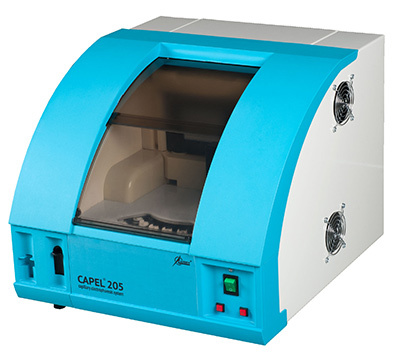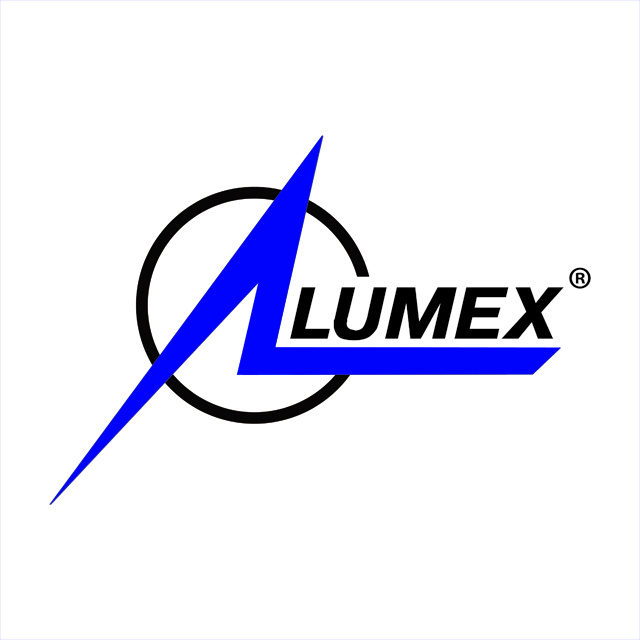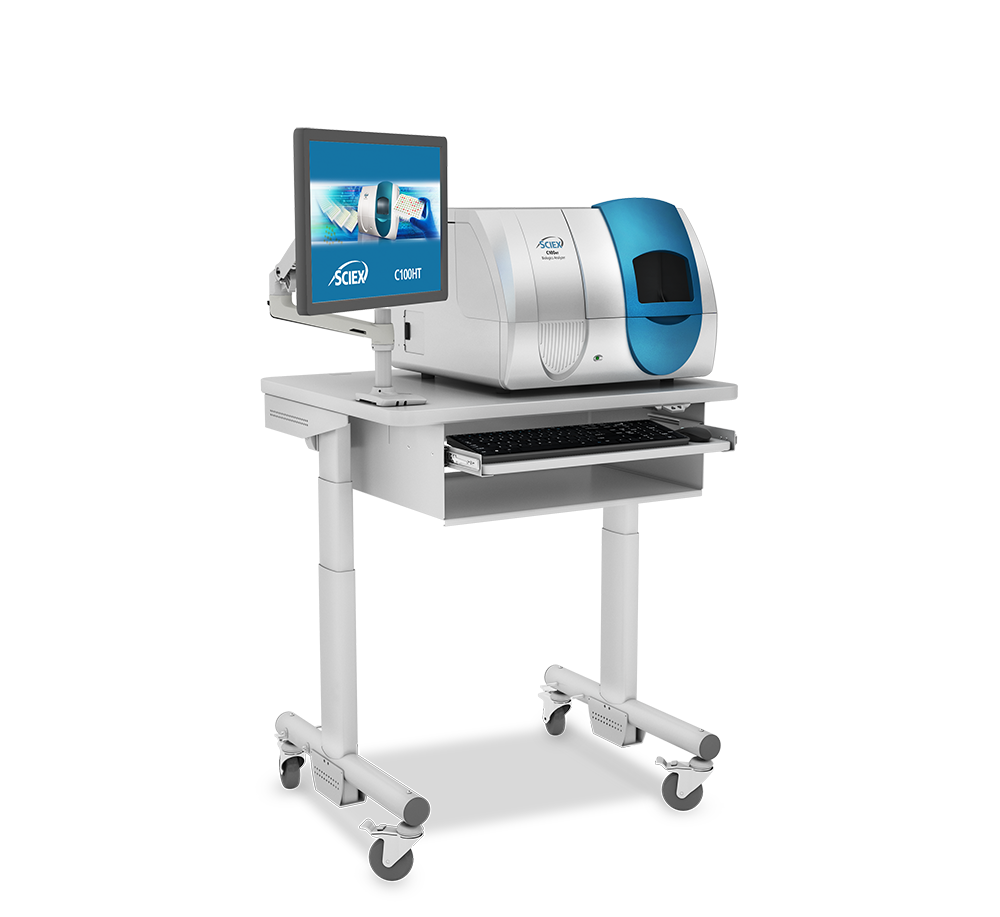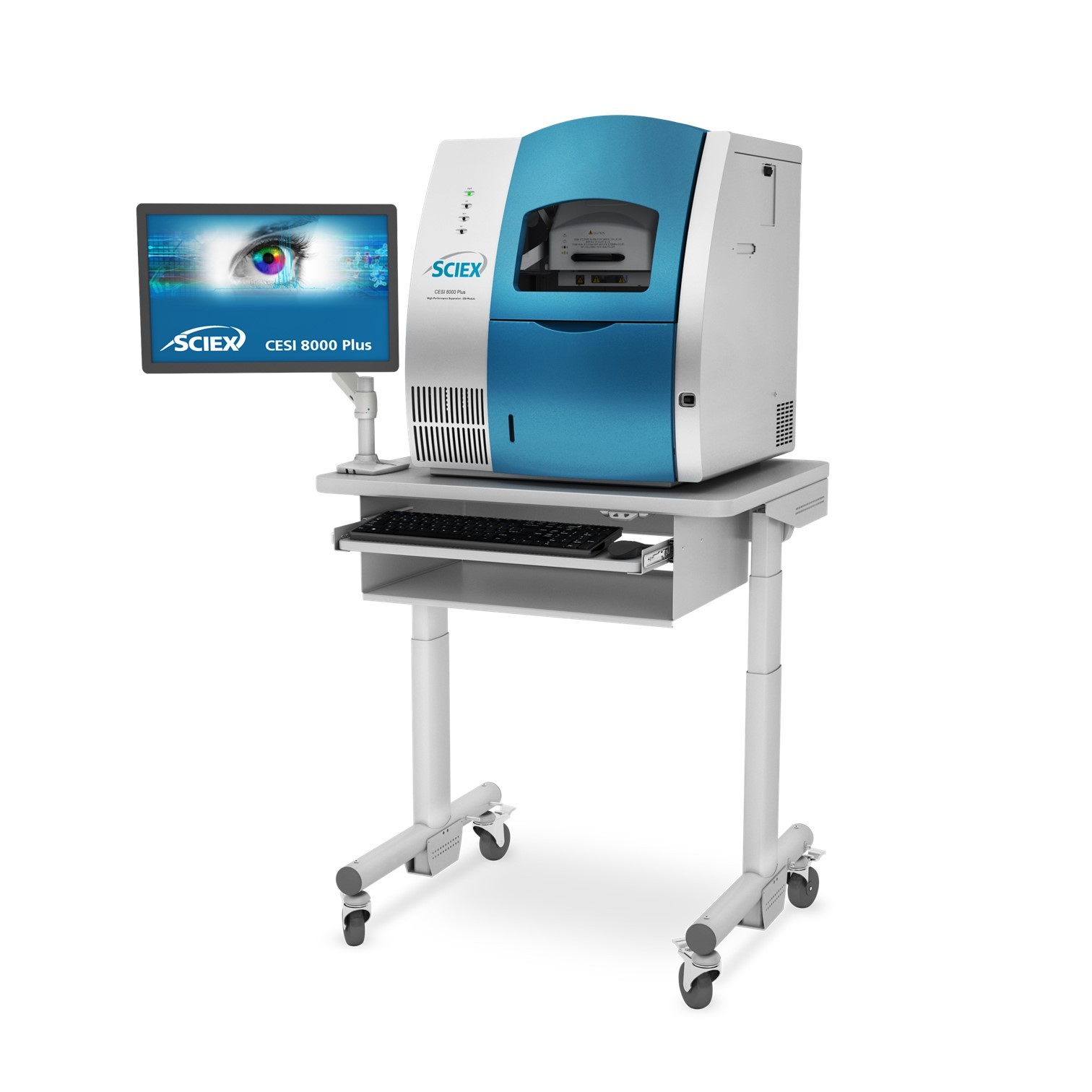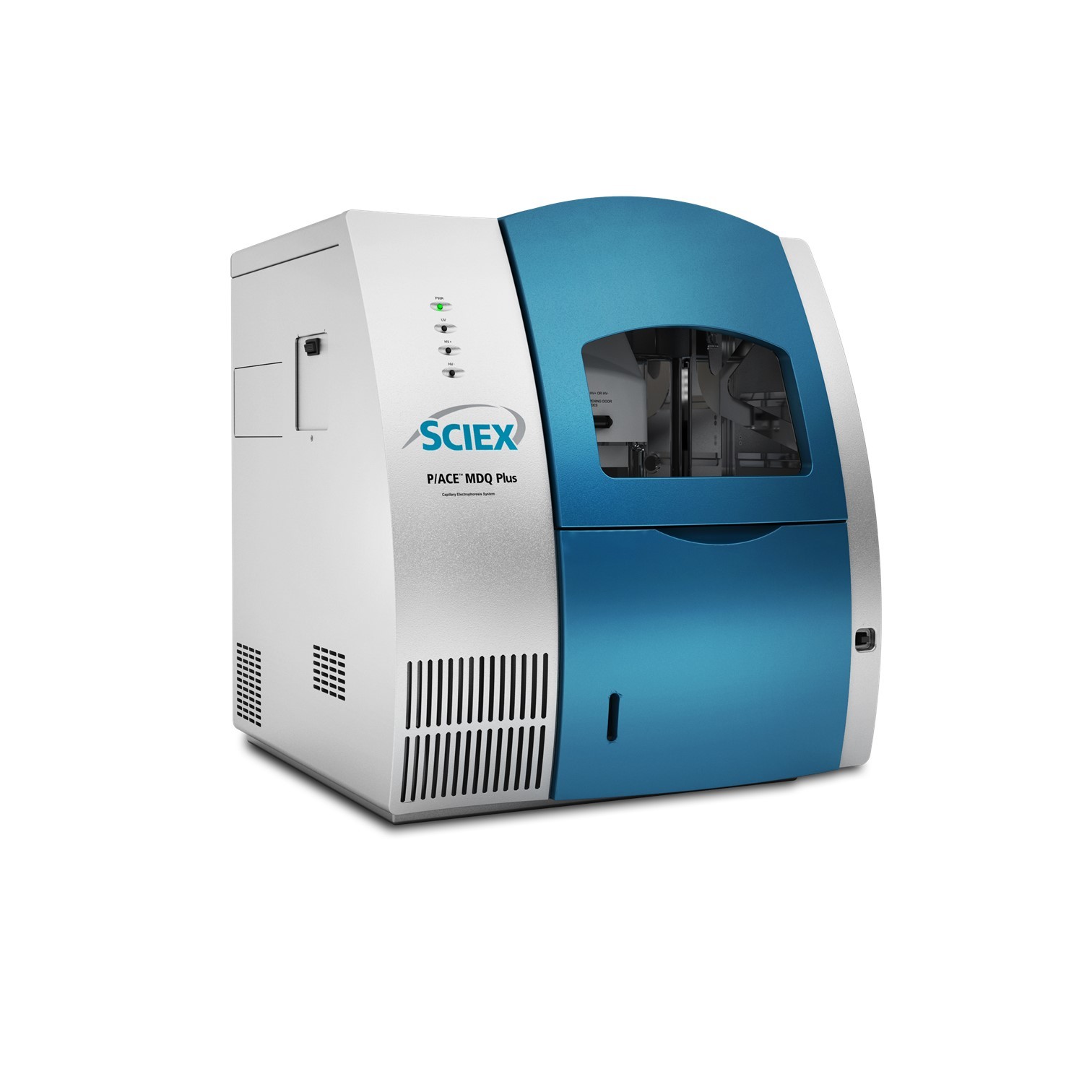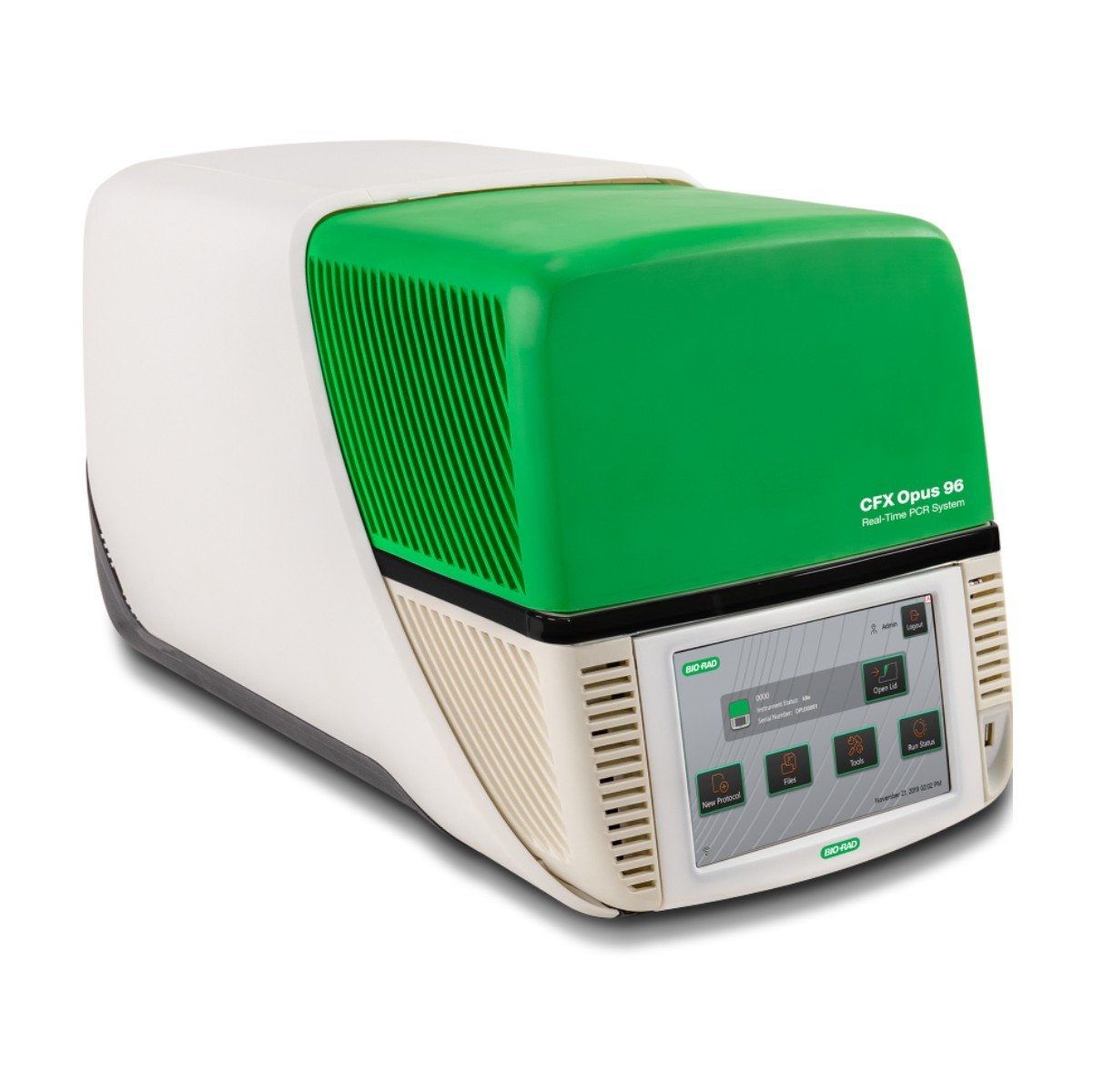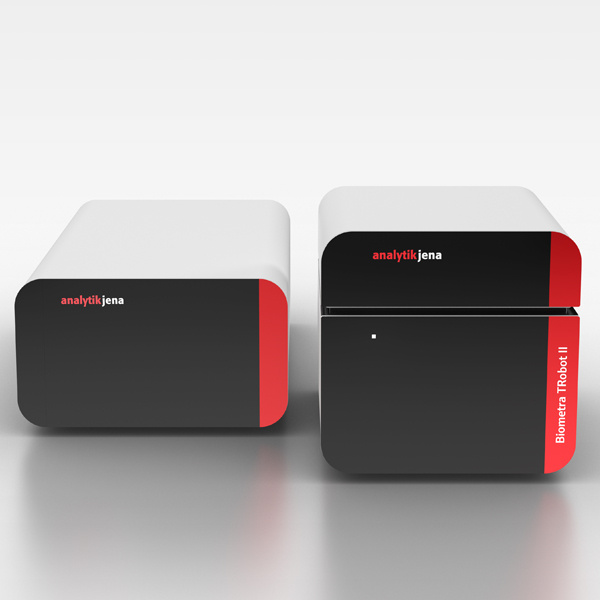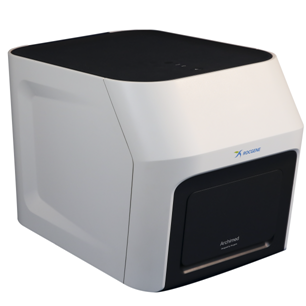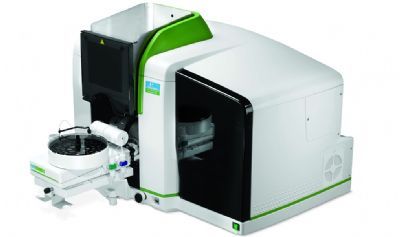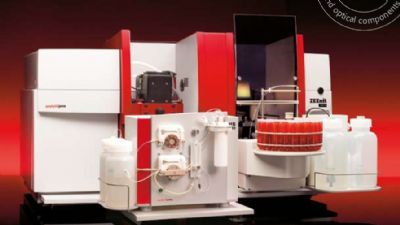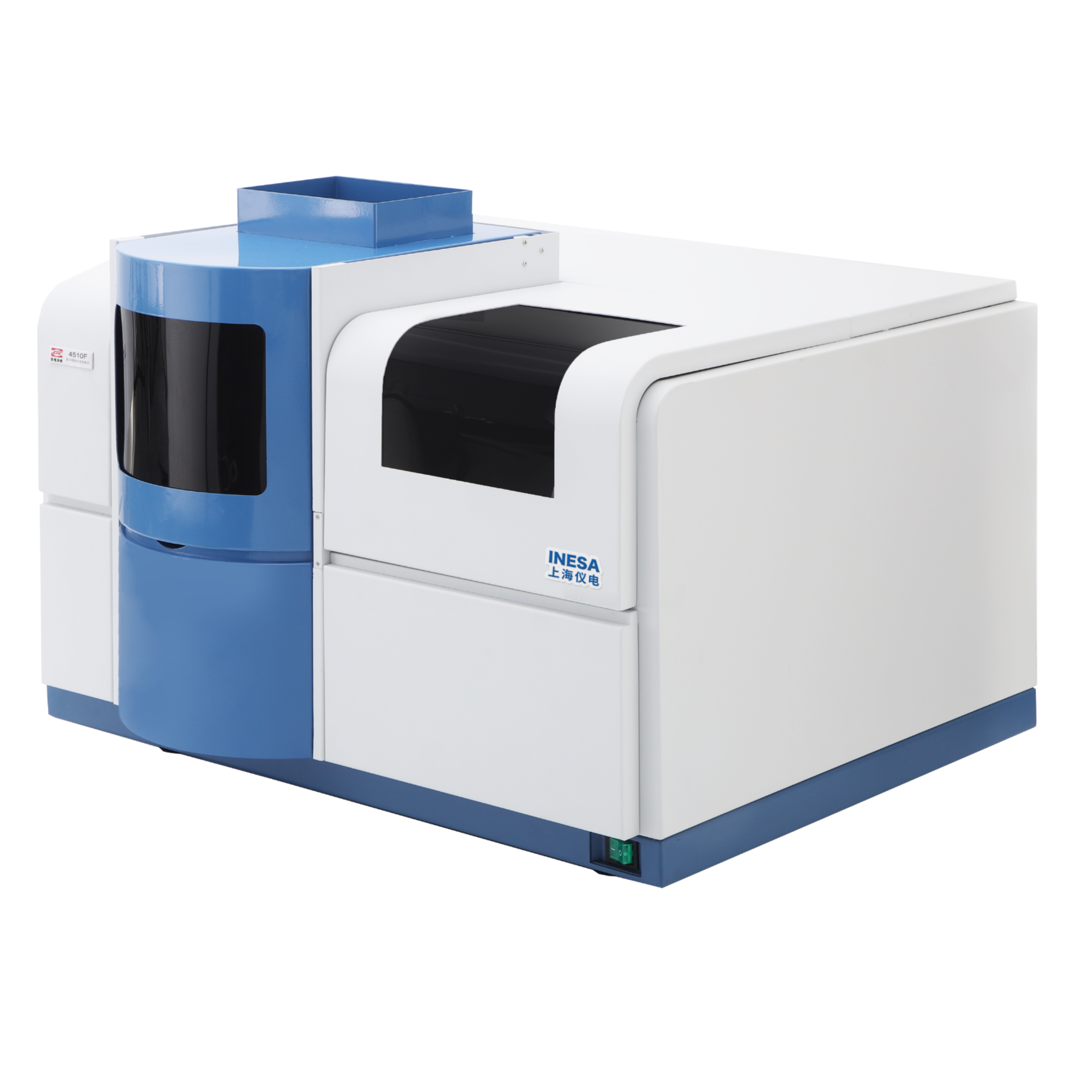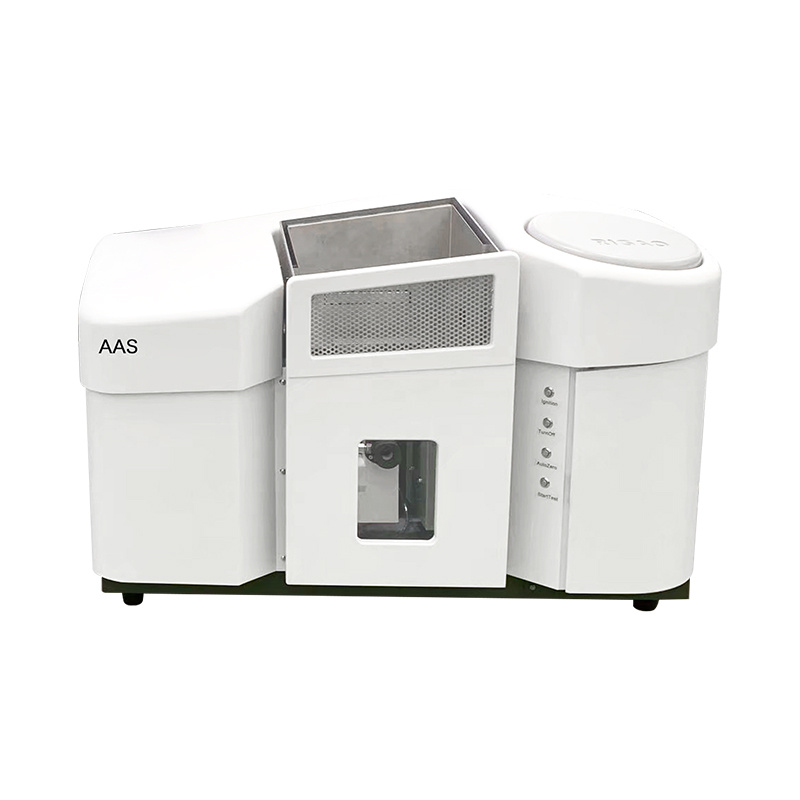方案详情
文
为了确定蛋白质样品的纯度和均一性,提出了两种基于毛细管的方法-毛细管凝胶电泳(CGE)和毛细管等电聚焦(CIEF)。前者在分子量不同的蛋白质被分解时应用。后者适用于几乎相同的分子量,但不同的净电荷的蛋白质异构体。
方案详情

HIGH PERFORMANCECAPILLARYELECTROPHORESIS SYSTEMCAPELseries a山 DETERMINATION OF PROTEIN PURITY AND HETEROGENEITY BYCAPILLARY GEL ELECTROPHORESIS AND CAPILLARY ISOELECTRICFOCUSING INTRODUCTION Antibodies, protein-based therapeutics, and other recombinant proteins are final products in biotechnologicaland pharmaceutical industry. Determination of their purity, stability, and heterogeneity is of utmostimportance since post-translational modifications as well as degradation processes can change drasticallythe biological activity of these proteins. MEASUREMENT METHOD To determine the purity and heterogeneity of protein samples, two capillary-based methods are proposed -capillary gel electrophoresis (CGE) and capillary isoelectric focusing (clEF). The former is appliedwhen proteins differing in molecular mass must be resolved. The latter is applied when proteins or proteinisoforms exhibit almost identical molecular masses, but differ in net charges. In CGE, capillary is filled with a buffered polymer solution. Prior to analysis, protein sample is denatured inthe presence of SDS by heating either under reducing (with reducing agent added) or non-reducingconditions. After rapid cooling the sample is injected, high voltage is applied, and proteins start migratingthrough polymer solution. Similar to SDS-gel electrophoresis in a slab, proteins are separated in a capillaryaccording to their molecular masses due to a sieving effect of the capillary polymer solution. Proteinsdiffering by as little as 4% in molecular mass can be resolved. In clEF, the entire capillary is filled with a polymer-based ampholyte-sample mixture. At the first stage,named focusing, high voltage is applied, which results in a pH gradient formation and focusing of proteins innarrow zones according to their pl values (where their net charges are equal to zero). At the end of thisstage there is almost no any movement in the capillary and current is about zero. During the second stage,named mobilization, the outlet vial is replaced with mobilization solution, high voltage is applied again, andfocused zones start moving toward detector point. Depending on selected ampholytes, proteins and proteinisoforms differing by as little as 0.04 pl unit can be resolved and quantified. For both methods a linear regression exists, reflecting the dependence of log Mw of the proteins (for CGE) ortheir pl values (for clEF) upon migration time. This is used to determine both parameters of the unknownproteins by adding the corresponding markers to the sample solution. EQUIPMENT AND REAGENTS The CAPEL-105M capillary electrophoresis system with a special capillary cassette for the protein analysisis used in all measurements. System controlling, data acquisition, data processing and output are performed using a personal computerrunning under“WINDOWS@XP" operating system with installed ELFORUN TM software package. Appropriate kits of reagents for either CGE or clEF are available and supplied according to the specified task. EXAMPLES OF REAL ANALYSES HC Method: Sample: capillary gel electrophoresisrArecombinant antibody lgG,analysed under reduced (shown inred) and non-reduced conditions(shown in black)IS- internal standard.LC - light chain (25kDa),HC - heavy chain (55 kDa),IgG - whole antibody (146 kDa).Other peaks are antibody degradationproductsspecial for proteinsCapillary: Leff/Ltot 32 /42 cm; Buffer: ID 75 um Voltage: -20 kV Temperature:25°C Detection: 220 nm of LC (bottom trace) and 5 kDa in case of HC (upper trace) isoforms (shown in blue) Inter-day reproducibility Method: Sample: Results: capillary isoelectric focusingprotein-based therapeuticSeveral isoforms, indicatingcharge heterogeneity wererevealed from the sample, whichhad earlier appeared to behomogeneous on a slab gel.Sequence of runs was carriedout within several days toevaluate reproducibility, whichhirappeared to be on a highestlevel. Run #5 (shown in blue)was performed two days afterRun #1 (shown in red). The contents on this paper are subject to change without notice. WWW.LUMEX.BIZ 为了确定蛋白质样品的纯度和均一性,提出了两种基于毛细管的方法-毛细管凝胶电泳(CGE)和毛细管等电聚焦(CIEF)。前者在分子量不同的蛋白质被分解时应用。后者适用于几乎相同的分子量,但不同的净电荷的蛋白质异构体。在CGE中,毛细管用缓冲聚合物溶液填充。在分析之前,蛋白质样品通过加入还原剂或加热来变性。快速冷却后,注入样品,施加高电压,蛋白质开始通过聚合物溶液迁移。类似于平板中的SDS凝胶电泳,由于毛细管聚合物溶液的筛分效应,蛋白质根据其分子质量在毛细管中分离。蛋白质的分子量差异不大,只有4%。在CIEF中,整个毛细管填充有基于聚合物的两性电解质样品的混合物。在第一阶段,通过等电聚焦,施加高电压,pH梯度形成使得样品中蛋白质其中它们的净电荷等于零)按照分子量的不同聚焦在一条狭窄区域中。在这个阶段结束时,毛细管中几乎没有任何运动,电流大约为零。在第二阶段,再次施加高电压,聚焦区开始向探测器点移动。根据选定的两性电解质,蛋白质和蛋白质异构体相差不大,只有0.04π单位可以解决和量化。这两种方法都可以通过线性回归来确定未知蛋白质的纯度和均一性。
确定
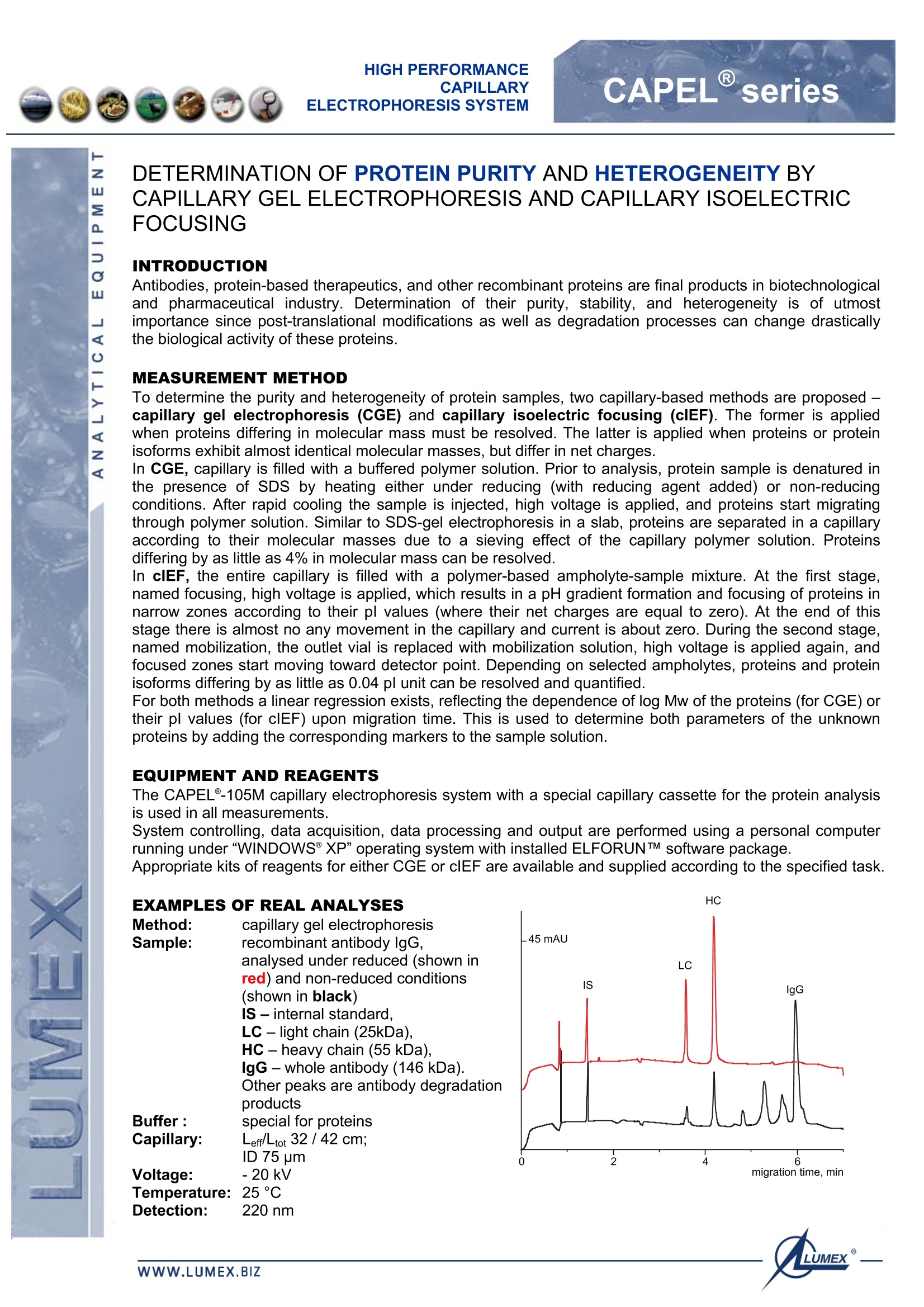
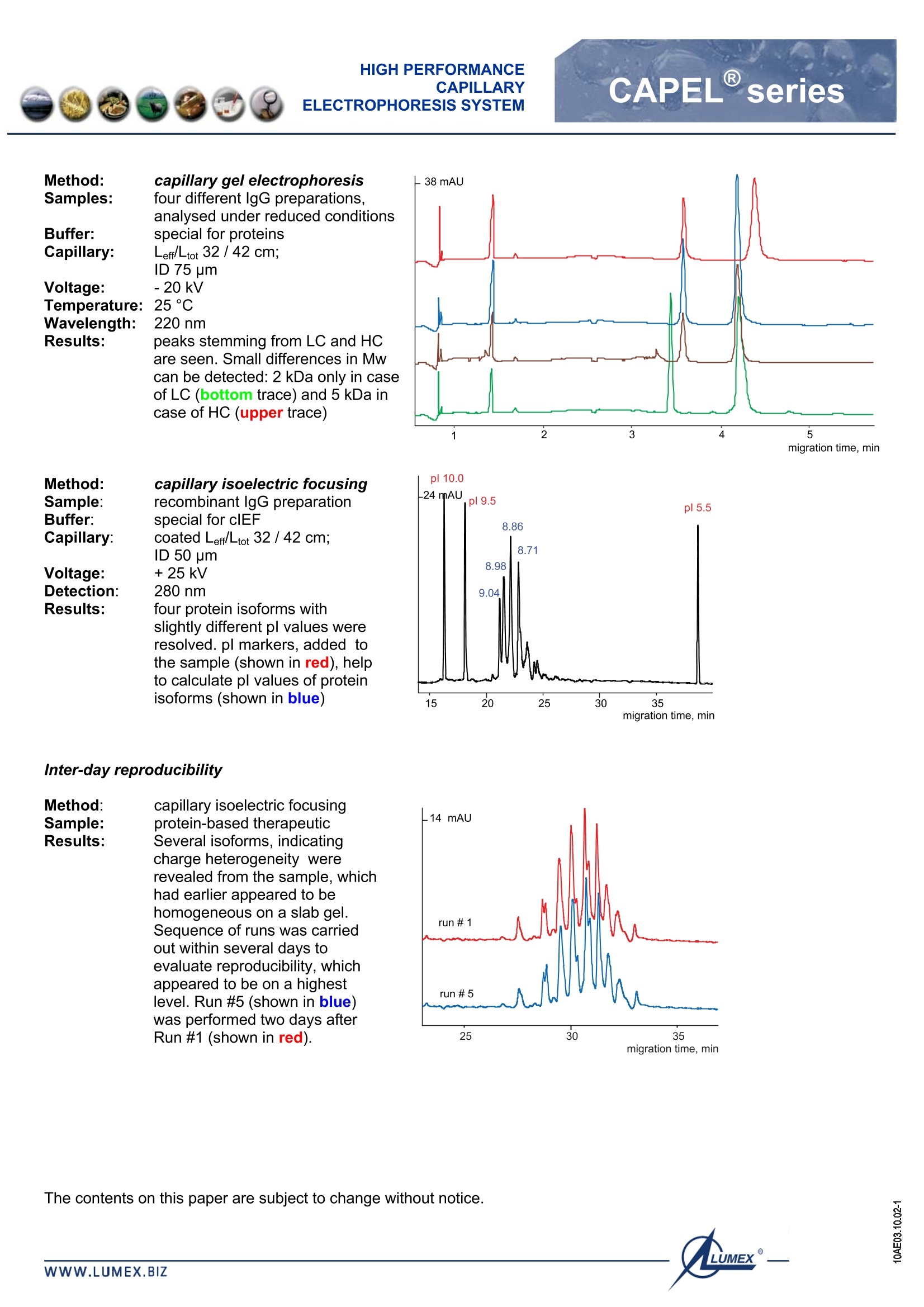
还剩1页未读,是否继续阅读?
LUMEX INSTRUMENTS (鲁美科思分析仪器)为您提供《蛋白质、抗体、重组蛋白中纯度、均一性检测方案(毛细管电泳仪)》,该方案主要用于其他中纯度、均一性检测,参考标准--,《蛋白质、抗体、重组蛋白中纯度、均一性检测方案(毛细管电泳仪)》用到的仪器有LUMEX高效毛细管电泳仪Capel 205、LUMEX实时荧光定量芯片qPCR仪- AriaDNA®、LUMEX石墨炉原子吸收MGA-1000
推荐专场
相关方案
更多

